BSBOPS502 Project Portfolio Student.v1.0
docx
keyboard_arrow_up
School
TAFE NSW - Sydney Institute *
*We aren’t endorsed by this school
Course
BSBOPS502
Subject
Business
Date
Jun 2, 2024
Type
docx
Pages
21
Uploaded by AmbassadorGorilla873
BSBOPS502
MANAGE BUSINESS OPERATIONAL PLANS
STUDENT VERSION
PROJECT
PORTFOLIO
First published 2021
RTO Works
www.rtoworks.com.au
hello@rtoworks.com.au
0452 157 557
© 2021 RTO Works This resource is copyright. Apart from any fair dealing for the purposes of private study, research, criticism or review as permitted under the Copyright Act 1968, no part may be reproduced by any process without written permission as expressed in the RTO Works License Agreement.
The information contained in this resource is, to the best of the project team’s and publisher’s knowledge true and correct. Every effort has been made to ensure its accuracy, but the project team and publisher do not accept responsibility for any loss, injury or damage arising from such information.
While every effort has been made to achieve strict accuracy in this resource, the publisher would welcome notification of any errors and any suggestions for improvement. Readers are invited to write to us at hello@rtoworks.com.au
.
Business Works is a series of training and assessment resources developed for qualifications within the Business Services Training Package.
Your preview ends here
Eager to read complete document? Join bartleby learn and gain access to the full version
- Access to all documents
- Unlimited textbook solutions
- 24/7 expert homework help
Contents
Section 1: Planning for an operational plan
5
Section 2: Developing an operational plan
9
Section 3: Managing operational performance
14
BSBOPS502 Manage business operational plans |
4
Student name:
Melissa Apriani Sudamara
Assessor:
Date:
28 / 05/ 2024
Business this assessment is based on:
HealthTech Solutions
Documentation reviewed as preparation:
BSBOPS502 Manage business operational plans |
5
Section 1: Planning for an operational plan
About the organisation Provide an overview of the organisation and product/services/programs.
Describe the key functions and activities of the work area
you will develop an operational plan for.
Briefly describe at least two objectives outlined in the strategic plan (if there is no strategic plan for your business, develop two objectives for your work area or business).
Describe your job role.
Explain how your job role contributes to the broader goals of the business or work area.
HealthTech Solutions (HTS) is a healthcare technology company dedicated to improving patient outcomes and healthcare delivery through innovative digital solutions, providing comprehensive and cost-effective IT solutions tailored to the unique needs of medical practices across Australia.
------------------------------------------------------------------------------------------
Activities relate to the first objective include:
Activity 1: Platform development
.
The development team designs and builds the telemedicine platform, including its user interface, functionality, and integration with other systems such as EHRs and scheduling software. This involves software development, UI/UX design, and backend infrastructure setup.
Activity 2: Security and Compliance
Ensuring the security and compliance of the telemedicine platform is paramount. The security team implements robust measures to protect patient data, including encryption, access controls, and compliance with healthcare regulations such as HIPAA (Health Insurance Portability and Accountability Act).
Activity 3: User Experience Optimization
The user experience (UX) team focuses on optimizing the usability and accessibility of the telemedicine platform for both patients and healthcare providers. This involves conducting user research, gathering feedback, and iterating on the design to enhance user satisfaction and engagement
.
Activities related to the second objective include:
Activity 1: Technical Support and Training:
The technical support team provides assistance to users of the telemedicine platform, including troubleshooting technical issues, answering questions, and providing guidance on how to use the platform effectively. They also offer training and on boarding sessions to ensure users are familiar with the platform's features and
functionalities.
Activity 2: Continuous Improvement:
Continuous improvement is a key focus area, with teams regularly gathering feedback from users, monitoring platform performance, and identifying opportunities for enhancement. This involves iterating
on the platform based on user feedback, technological advancements, and changes in healthcare regulations and practices.
--------------------------------------------------------------------------- As a product management manager, encompass overseeing the entire lifecycle of the telemedicine platform, from conceptualization to launch and beyond. This involves collaborating closely with cross-
functional teams including software development, UX/UI design, quality assurance, marketing, and customer support.
Source information
Identify stakeholders who will contribute to the operational plan and provide relevant approvals:
The Board of directors—approval and financial support; The CEO-- The person in charge and coordinator Sales manager-- address the objectives “increase sales to increase donations to needy classrooms” and “strengthen the skills of our people, to better support customers”. customers—feedback and improvement source marketing manager—marketing and decision making; BSBOPS502 Manage business operational plans |
6
Your preview ends here
Eager to read complete document? Join bartleby learn and gain access to the full version
- Access to all documents
- Unlimited textbook solutions
- 24/7 expert homework help
Who are they (consider escalation, specialist resource manager, colleague, client)?
What contribution will they make?
What will they approve (if
relevant)?
Identify and summarise any legislation relevant to the operational plan you develop.
Identify and summarise any organisational policies and procedures relevant to the operational plan you develop. (Attach proof to this section of
your portfolio).
Summarise the financial information (e.g. budget and forecast) that will inform spending and (attach proof to this section of your portfolio).
HR manager—human resource coordinator, other staff; suppliers.
The Privacy Act 1988
(Cth) (Privacy Act) Fair work act 2009 The Competition and Consumer Act 2010 --------------------------------------------------------------------------------------- Finance Authorisation Policy and Procedures New supplier policy
Privacy Policy and Procedures Employee Training and Development Policy and Procedures Internal Communication Policy and Procedures External Communication Policy and Procedures Social networking policy Documentation Policy and Procedures Procurement Policy and Procedures Recruitment Policy and Procedures -
establishing a second manufacturing facility (forecasted cost
$5 million) -
outsourcing manufacturing to a third party (forecasted lost margin of $200 per unit sold or $2 million per year assuming 10000 units are sold)
-
developing a cloud-based solution where customers can access the software remotely on their own devices (forecasted cost of $2 million) -
purchasing off the shelf tablets (forecasted lost margin of $300 per unit sold or $3 million per year) -
repurposing used tablets (forecasted $100 per unit sold or $1 million).
Identify potential activities
What potential activities are required to address the objectives (at least three per objective)?
What are your suggested time
frames for each activity?
Who will be responsible for the completion of each activity?
Activities relate to the first objective include: Activity 1: Create an online advert for the new product (quoted price of $25000) ---3 to 4 weeks, marketing manger Activity 2: Arrange a live demonstration for existing customers – 2 weeks, HR dept Activity 3: Create rewards program to reward school based on number of downloads --- 1 month, R&D dept Activities related to the second objective include: Activity 1: Train sales staff to use new product --- 2 weeks, HR Activity 2: Organise school visits -----1 week, HR Activity 3: Sponsorship program to develop personal relationships between less fortunate children and sales staff --- 3 weeks, R&D dept
Goals achievement requires commitment, so maximise the likelihood
of success, you need to feel a sense of urgency and have an “I must
do this” attitude.
Establish potential human resource requirements
For each potential activity in the operational plan, list the human resources required (at least one new human resource should be required).
The goal of activity resource estimating is to assign resources to each activity in the activity list. There are five tools and techniques for estimating activity resources.
Expert judgment means bringing in experts who have done this sort of work before and getting their opinions on what resources are needed.
BSBOPS502 Manage business operational plans |
7
For each human resource:
research and summarise information on resource options and how the resource may be sourced
(e.g. can internal staff do the job, are consultants required etc.?).
analyse options and choose one.
explain how the resource
will be recruited and inducted following policy and procedure.
explain any financial implications (e.g. approval required, amount to be budgeted for etc.).
explain any Intellectual Property (IP) requirements, rights and responsibilities linked to the resource.
Alternative analysis means considering several different options for how you assign resources. This includes varying the number of resources as well as the kind of resources you use. Many times, there’s more than one way to accomplish an activity and alternative analysis helps decide among the possibilities.
Published estimating data is something that project managers in a lot of industries use to help them figure out how many resources they need. They rely on articles, books, journals, and periodicals thatcollect, analyse, and publish data from other people’s projects.
Project management software such as Microsoft Project will often have features designed to help project managers estimate resource needs and constraints and find the best combination of assignments for the project.
Bottom-up estimating means breaking down complex activities into pieces and working out the resource assignments for each piece. It is a process of estimating individual activity resource need or cost and then adding these up together to come up with a total estimate. Bottom-up estimating is a very accurate means of estimating, provided the estimates at the schedule activity level are accurate. However, it takes a considerable amount of time to perform bottom-
up estimating because every activity must be assessed and estimated accurately to be included in the bottom-up calculation. The smaller and more detailed the activity, the greater the accuracy and cost of this technique.
Establish potential physical resource requirements
Use the information from your
research and knowledge of your work area.
For each potential activity in the operational plan, list the physical resources required (identify at least one).
For each physical resource:
research and summarise information on resource alternatives (e.g. RPA vs human input)
analyse options and choose best one
explain how the resource
will be obtained/purchased following policy and procedures
Every business needs resources, whether it's people, money, suppliers, or time. The physical resources include tangible items that
are necessary and available for a business to function. These are items that take space, have a value, and are used in the operation of
the company.
Physical resources are necessary for all types of business. Product-
based businesses use physical resources for providing the goods for
sale and for the operation of the business. Service-based businesses use physical resources to facilitate the delivery of the service, such as having a space to work, tools that are needed for the service, and resources used to support the service.
Physical resources, which include facilities, equipment, land, and other assets, support student learning programs and services and improve institutional effectiveness. Physical resource planning is integrated with institutional planning. Information can be communicated to team members via email and other formal or informal written forms (such as memos or notices) or using the phone. Information can also be presented visually and verbally via presentations at meetings or demonstrations, such as operating new equipment one-to-one or in small groups. You may also need to advise and communicate changes and outcomes outlined in operational plans to customers and clients.
BSBOPS502 Manage business operational plans |
8
explain any financial implications (e.g. approval required, amount to be budgeted for etc.)
explain any Intellectual Property (IP) requirements, rights and responsibilities linked to the resource (other than those already considered).
Always conduct checks on the documentation when seeking sign-off and approval from the human resources department or authority in an organisation. You can ask a colleague to carefully read the documentation, check it for errors and ensure compliance with the organisational requirements. Any advertisements that have been developed and subsequently processed for printing in hard copy or publication via the internet or intranet should be proofed to check for errors before receiving final approval.
Establish potential KPIs
For each activity, establish measurable KPIs.
Show how you approached establishing the KPIs in a mathematical way using problem-solving.
How do the KPIs reflect financial requirements?
List ways to monitor the KPIs.
There are a number of approaches to developing KPIs. Organisations need to identify approaches that are most relevant to their unique business outcomes and planning activities. Below are some guidelines on different approaches that can be used for developing KPIs.
Lifecycle approach - KPIs may be developed using a lifecycle approach. For example, in managing a project, KPIs would focus on each stage of the project life cycle such as design, planning, implementation and finalisation. The use of a lifecycle approach to developing KPIs ensures they are assigned at all stages of the lifecycle from start to end. Statutory and regulatory requirements - It may be appropriate to focus the selection of KPIs on statutory and regulatory requirements and obligations. For example, a KPI could be developed that requires the appropriate authority to undertake a regular audit to assess compliance with the legislation. Risk-based approach - The risk-based approach identifies those specific services, functions or activities that may have a negative or detrimental impact on an organisation. By identifying areas of risk, KPIs can be used to measure progress towards mitigating the risk.
Identify data security issues
Identify any data security requirements or issues associated with the activities.
Refer to Privacy Act 1988, This legislation protects all personal information handled by businesses. Attached to this legislation are the 13 Australian Privacy Principles, which set the standard for handling personal information. These Australian Privacy Principles relate to: • open and transparent
management of personal information • anonymity and pseudonymity • collection of solicited personal information • dealing with unsolicited
personal information • notification of the collection of personal information • use or disclosure of personal information • direct marketing • cross-border disclosure of personal information • adoption, use or disclosure of government related identifiers • quality
of personal information • security of personal information • access to personal information • correction of personal information.
BSBOPS502 Manage business operational plans |
9
Your preview ends here
Eager to read complete document? Join bartleby learn and gain access to the full version
- Access to all documents
- Unlimited textbook solutions
- 24/7 expert homework help
Attach:
Proof of policies and procedures relevant to work area and/or operational plan
☐
Proof of financial information and relevant calculations (e.g. budget, graphs)
☐
BSBOPS502 Manage business operational plans |
10
Section 2: Developing an operational plan Consult with others
Summarise the outcomes of your meeting with relevant stakeholders:
Which stakeholders did you consult with?
Why were these stakeholders part of the consultation process?
Were any changes to your suggested activities,
resources, timeframes, KPIs and monitoring processes requested?
Describe how you collaborated to achieve joint outcomes.
How did you seek feedback, advice and support?
If not already viewed in person by your assessor, attach proof of the consultation to this section of your portfolio.
The first rule of engagement is all about sharing information in a purposeful and consistent way. All key stakeholders need to know the organization’s core purpose. External stakeholders need to understand why the organization exists and what value it provides forits customers, vendors, and the market. Internal stakeholders need to know where the organization is going so they can align their work with those goal(s) and direction. To make sure this happens, use all communication means available – newsletters, electronic messaging,e-mail, meetings, posters, payroll inserts, etc. Be consistent in the messages, and use them to show employees how they fit into the plan and how their contributions have helped shape the choices made. Share the results they have achieved and coach them toward strategic performance. Be visual, and make the messages visible everywhere. I often create
visual strategic roadmaps than can be posted throughout an organization to remind people of the importance of the company’s mission, vision, and strategies. People who know what is expected and how they contribute are more engaged and committed than those who do not.
Actively involve stakeholders in the process.
Ask for input about strategic planning in meetings, through surveys, with targeted suggestion boxes, in employee newsletters. Include representatives of stakeholder groups in discussions for strategic planning to the greatest extent possible, and do not limit planning and
review sessions only to the top level of management. Include representatives from as many key stakeholder groups as are appropriate to the discussion at hand. This can be done formally in large group planning activities, or informally by including different key stakeholders in a variety of meetings. Use department meetings as an opportunity to solicit input on the plan and its results. Help employees understand the difference between strategic initiatives (long-term, big picture) and the tactical (day-to-day) work with which they are most familiar. Show them how the two levels are aligned. Greater understanding leads to greater ownership. Keep the messages flowing for constant reinforcement of the shared ideas, and give feedback on how ideas are being incorporated into the process.
BSBOPS502 Manage business operational plans |
11
Objective
Activity/
strategy to achieve objective
Person responsible
for completion
Timeline
Resources required
KPI
Budget
Objective selected from strategic plan
Activity required to realise objective
Person responsible for the activity’s successful completion
When must the activity be completed by or during which period is it to be completed
Human and physical resources required to complete activity
KPI to measure and monitor success of the activity
Re
vie
w Sys
te
m
Re
vie
w Sys
te
m
Re
vie
Implement staff performance management review system
General Manager
3 weeks
Performanc
e manager system, staff, computer
Staff advised of new system and performance
reviews conducted across the organisation
Develop an online platform for all
software
Developmen
t Manager
3 weeks
Staff, Computer, Internet
Increase online users by 20%
BSBOPS502 Manage business operational plans |
12
Your preview ends here
Eager to read complete document? Join bartleby learn and gain access to the full version
- Access to all documents
- Unlimited textbook solutions
- 24/7 expert homework help
Objective
Activity/
strategy to achieve objective
Person responsible
for completion
Timeline
Resources required
KPI
Budget
w Sys
te
m
Review System
Review the performanc
e of the company
BSBOPS502 Manage business operational plans |
13
Develop a contingency plan.
Activity/strategy to achieve objective
Potential risks
Planned Response
Activity required to realise objective
Risk associated with the activity
How you will mitigate the risk
Compliance Risk
Australian government changing policy in relation to industry
Keep the policy up to date and make sure the staff are informed
Financial Risk
Significant drop in cash flow
To ensure the budgeting are on track
Operational Risk
Failure to recruit planned numbers of clients
Failure to recruit planned numbers of clients
Operational Risk
The world recession and the domino effect
To reduce non-essential spending for the business
BSBOPS502 Manage business operational plans |
14
Approve plan
Follow organisational policies and procedures to seek approval for your operational plan:
Who will you seek approval from?
How will you seek approval?
Attach proof of approval (e.g. minutes of executive team meeting, draft email) to this section of the portfolio.
Always conduct checks on the documentation when seeking sign-
off and approval from the human resources department or authority in an organisation. You can ask a colleague to carefully read the documentation, check it for errors and ensure compliance with the organisational requirements. Any advertisements that have been developed and subsequently processed for printing in hard copy or publication via the internet or intranet should be proofed to check for errors before receiving final approval. A clear statement about what information and format you require in an application can help with assessing the submissions at a later date. Suggested inclusions for an application information statement: • Personal details • Personal qualities and background • Qualifications and experience • Knowledge and skills • A comment against each of the selection criteria
Document resource requirements
Document the resource requirements (following organisational policy and procedures).
Attach proof to this section of the portfolio.
1. Research, analyse and document resource requirements and develop an operational plan in consultation with relevant personnel,
colleagues and specialist resource managers
2. Develop and/or implement consultation processes as an integral part of the operational planning process
3. Ensure details of the operational plan include the development of
key performance indicators to measure organisational performance
4. Develop and implement contingency plans at appropriate stages of operational planning 5. Ensure the development and presentation of proposals for resource requirements is supported by a variety of information sources and seek specialist advice as required
6. Obtain approval for plan from relevant parties and ensure understanding among work teams involve
Explain plan to team
Attach proof to this section of the portfolio (if not already viewed in person by the assessor).
Operational planning is what happens when a team or department draws from a company-wide strategic plan and puts it under a microscope. It’s future-oriented: it maps out department budgets and goals to propel the success of the strategic plan with specific, team-based activities for the next 1-3 years
Attach:
Proof of stakeholder meeting (if relevant)
☐
Documented resource requirements
☐
Operational plan (if you did not use the provided table)
☐
Contingency plan (if you did not use the provided table)
☐
BSBOPS502 Manage business operational plans |
15
Your preview ends here
Eager to read complete document? Join bartleby learn and gain access to the full version
- Access to all documents
- Unlimited textbook solutions
- 24/7 expert homework help
Proof of operational plan approval
☐
Explanation to team (if relevant)
☐
BSBOPS502 Manage business operational plans |
16
Section 3: Managing operational performance
Confirm human resource acquisition
Confirm that any new staff members required to complete
the activities in the operational plan were recruited and inducted according to the organisation’s policies, practices and procedures (e.g.
via email, face-to-face conversation, survey etc.)
Attach proof to this section of the portfolio.
When considering the staffing needs of your organisation, making notes on the following issues will help you to determine the level of staffing needed, the type of job roles required and where the most urgent need for new staff lies. Against each of the areas in the following table, make notes on how changes will impact on the organisation’s staffing needs. Some organisations include specific information such as hours of work, work conditions and salary into the employee’s contract of employment instead of in the job description. Some organisations prefer the person specifications and selection criteria to be included as a separate document.
Email sent to party A
To – jimmynoosa@healthtechsolution.com
From – apriamelissa@healthtechsolution.com
Date – 10-03-2024
Subject KPI
Hello Jimmy,
Here by all of the information we are do the implementation in the operational plan regarding the operational pan. In those we need to do the changes in the work plan so kindly checked them and give us the proper feedback regarding this.
Thanks
Regards,
Melissa
BSBOPS502 Manage business operational plans |
17
Confirm physical resource acquisition
Confirm that any new physical resources and services required to complete the activities in the operational plan were acquired according to the organisation’s policies, practices and procedures (e.g.
via email, face-to-face conversation, invoices, quotes etc.)
Attach proof to this section of the portfolio.
As a manager with responsibility for the implementation of operational plans, you need to acquire the necessary resources so that plan outcomes can be achieved. Some organisations require a wide range of resources and others may need relatively few. The types of resources are determined by the nature of the business, the size of the organisation, the strategic objectives and the corresponding targeted outcomes of the operational plan. The acquisition of resources for many organisations occurs in accordance with defined policies, practices and procedures. Such policies, practices and procedures may consider the aspects shown below.
Organisational guidelines for acquiring human and physical resources are generally well-documented and are part of the standard procedures that managers must follow. The level of delegated authority held by a manager may determine the level of commitment they can
make in acquiring resources.
Incorporate Intellectual Property (IP) requirements
Take necessary steps to ensure any IP requirements (established in Section 1 of your Project Portfolio) are incorporated in the execution of activities (e.g. memo to staff, contractual agreement, email to include it in induction process etc.)
Attach proof to this section of the portfolio.
1. Identify your IP
2. Understand your options
3. Keep it confidential
4. Protect your idea or brand by registering it
5. Be cautions in commercialisation
6. Track your costs
7. Research your Market
8. Get business know-how
9. Work out a commercialisation strategy
10. Beware of infringement
Plan and implement monitoring
Choose one activity and its related KPI.
Establish a process that can be used to monitor and document performance of the KPI (either using a flowchart or
words).
Implement the process (e.g. by
placing a poster in the office, sending an email etc.)
Attach proof of your implementation to this section of your portfolio.
Key performance indicators (KPIs) refer to a set of quantifiable measurements used to gauge a company’s overall long-term performance.
KPIs specifically help determine a company's strategic, financial, and operational achievements, especially compared to those of other businesses within the same sector.
KEY POINTS
Key performance indicators (KPIs) measure a company's success versus a set of targets, objectives, or industry peers.
KPIs can be financial, including net profit (or the bottom line, gross profit margin), revenues minus certain expenses,
or the current ratio (liquidity and cash availability).
Customer-focused KPIs generally center on per-customer efficiency, customer satisfaction, and customer retention.
Process-focused KPIs aim to measure and monitor operational performance across the organization.
BSBOPS502 Manage business operational plans |
18
Your preview ends here
Eager to read complete document? Join bartleby learn and gain access to the full version
- Access to all documents
- Unlimited textbook solutions
- 24/7 expert homework help
Generally speaking, businesses measure and track KPIs through business analytics software and reporting tools.
Assess progress
Assess and document the progress of the activity you selected to monitor in the previous step (use the data showing underperformance).
You may consider:
Is it likely to be completed
within the timeframe set?
Will it meet budget?
Are any additional resources required?
Are any resources under-
performing (identify at least one)?
Attach relevant data/proof of progress to this section of your
portfolio.
Attach documented performance to this section of your portfolio.
Monitoring and evaluation is an essential component of any adaptation planning and should not be neglected. Trigger indicators and performance indicators can be monitored and the results used to determine when actions should be implemented and to track the success of the adaptation plan. Effective monitoring and evaluation
underpin the planning cycle.
Monitoring and evaluation (M&E) is critical to ensure the long-term success of climate adaptation initiatives, plans and actions. It can help to demonstrate accountability to stakeholders and communities.
Monitoring, evaluation and review design is critical to ensure that information is used to inform decision-making, make appropriate adjustments, and report to stakeholders and decision makers. Without a clear link between monitoring and decision-making, there is a risk that monitoring activities and resources will be seen as a drain on resources and discontinued.
Trigger points can be identified and monitored and, when reached, can stimulate the implementation of the next action in a sequence. In identifying trigger levels for response, it is important to consider the time required for the decision to be made and implemented. This should include acknowledging the time that may required for effective stakeholder engagement, or for any detailed investigation, design and development of actions that may be required
Negotiate and approve variations
Summarise the outcomes of your negotiations with relevant stakeholders:
Who was part of the negotiation?
What are reasons for underperformance and how can it be solved?
What did you negotiate (e.g. adjusted timeframe to allow for additional training)?
How can you support the resource going forward?
Which variations were Getting results is the goal of project managers. The process of making this happen starts with defining a purpose, forming a vision, and working through mission and goals to deliver outputs, preferably outcomes desired by the customer or client and key stakeholders. In practice, many steps are missed or skipped, and stakeholders resist. Learn about the missing ingredients—the integration secret sauce. This paper traverses the journey from vision to reality, defining terms, sharing examples, and illustrating how influencing and negotiating skills are crucial to the process. The net outcome for readers does not require learning a whole new process; rather you come to embrace accountability, reframing, and
persuasion as vital tools. Adopt a mindset about key concepts and techniques that make you more complete—and immediately effective to get results—as a project leader.
BSBOPS502 Manage business operational plans |
19
approved?
Attach proof of your negotiation to this section of your portfolio (if not already viewed in person by your assessor).
Approve variations.
Gain approval from relevant stakeholders for the negotiated
variation(s).
Attach proof to this section of your portfolio (e.g. minutes of executive team meeting, email etc.).
Getting results is the goal of project managers. The process of making this happen starts with defining a purpose, forming a vision, and working through mission and goals to deliver outputs, preferably outcomes desired by the customer or client and key stakeholders. In practice, many steps are missed or skipped, and stakeholders resist. Learn about the missing ingredients—the integration secret sauce. This paper traverses the journey from vision to reality, defining terms, sharing examples, and illustrating how influencing and negotiating skills are crucial to the process. The net outcome for readers does not require learning a whole new process; rather you come to embrace accountability, reframing, and
persuasion as vital tools. Adopt a mindset about key concepts and techniques that make you more complete—and immediately effective to get results—as a project leader.
Address underperformance
Confirm that support is provided where necessary according to policy and procedures (e.g. email to arrange training).
Attach proof of confirmed support to this section of your portfolio.
Employers often provide employees with handbooks, policies and procedures which regulate workplace matters such as:
Work health and safety.
Anti-discrimination and equal employment opportunity.
Occupational Health and Safety.
Use of company property.
Use of social media.
Drug and alcohol use.
Employee performance management and discipline.
Attach:
Proof to confirm recruitment and induction processes
☐
Proof to confirm physical resource acquisition processes
☐
Proof of incorporated IP requirements
☐
Proof of implementation of monitoring process
☐
Proof of data/progress (if relevant)
☐
Documented performance
☐
Proof of negotiation (if relevant)
☐
Proof of approval
☐
BSBOPS502 Manage business operational plans |
20
Proof to confirm additional support
☐
REFERENCE
1
. BSBOPS502 Simulation Pack
2. Resource Planning
, BC Campus, 06/10/2021,
https://opentextbc.ca/projectmanagement/chapter/chapter-11-resource-planning-project-management/
3. Operational Planning: How to Make an Operations Plan
, Project Manager, 06/10/2021, https://www.projectmanager.com/blog/operational-planning-make-operation-plan
4. Key Performance Indicators,
Investopedia, 06/10/2021, https://www.investopedia.com/terms/k/kpi.asp
BSBOPS502 Manage business operational plans |
21
Your preview ends here
Eager to read complete document? Join bartleby learn and gain access to the full version
- Access to all documents
- Unlimited textbook solutions
- 24/7 expert homework help
Related Documents
Recommended textbooks for you

BUSN 11 Introduction to Business Student Edition
Business
ISBN:9781337407137
Author:Kelly
Publisher:Cengage Learning
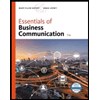
Essentials of Business Communication (MindTap Cou...
Business
ISBN:9781337386494
Author:Mary Ellen Guffey, Dana Loewy
Publisher:Cengage Learning
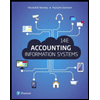
Accounting Information Systems (14th Edition)
Business
ISBN:9780134474021
Author:Marshall B. Romney, Paul J. Steinbart
Publisher:PEARSON
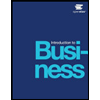
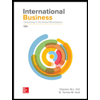
International Business: Competing in the Global M...
Business
ISBN:9781259929441
Author:Charles W. L. Hill Dr, G. Tomas M. Hult
Publisher:McGraw-Hill Education
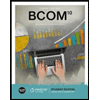
Recommended textbooks for you
 BUSN 11 Introduction to Business Student EditionBusinessISBN:9781337407137Author:KellyPublisher:Cengage Learning
BUSN 11 Introduction to Business Student EditionBusinessISBN:9781337407137Author:KellyPublisher:Cengage Learning Essentials of Business Communication (MindTap Cou...BusinessISBN:9781337386494Author:Mary Ellen Guffey, Dana LoewyPublisher:Cengage Learning
Essentials of Business Communication (MindTap Cou...BusinessISBN:9781337386494Author:Mary Ellen Guffey, Dana LoewyPublisher:Cengage Learning Accounting Information Systems (14th Edition)BusinessISBN:9780134474021Author:Marshall B. Romney, Paul J. SteinbartPublisher:PEARSON
Accounting Information Systems (14th Edition)BusinessISBN:9780134474021Author:Marshall B. Romney, Paul J. SteinbartPublisher:PEARSON
 International Business: Competing in the Global M...BusinessISBN:9781259929441Author:Charles W. L. Hill Dr, G. Tomas M. HultPublisher:McGraw-Hill Education
International Business: Competing in the Global M...BusinessISBN:9781259929441Author:Charles W. L. Hill Dr, G. Tomas M. HultPublisher:McGraw-Hill Education

BUSN 11 Introduction to Business Student Edition
Business
ISBN:9781337407137
Author:Kelly
Publisher:Cengage Learning

Essentials of Business Communication (MindTap Cou...
Business
ISBN:9781337386494
Author:Mary Ellen Guffey, Dana Loewy
Publisher:Cengage Learning

Accounting Information Systems (14th Edition)
Business
ISBN:9780134474021
Author:Marshall B. Romney, Paul J. Steinbart
Publisher:PEARSON


International Business: Competing in the Global M...
Business
ISBN:9781259929441
Author:Charles W. L. Hill Dr, G. Tomas M. Hult
Publisher:McGraw-Hill Education
